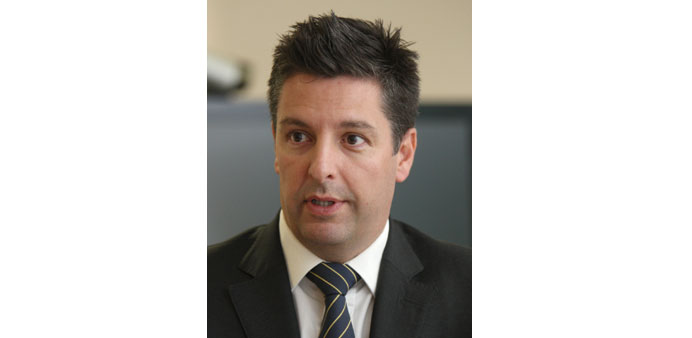By Peter Alagos
Business Reporter
Innovation, research and development (R&D), as well as investing on local assembly plants are among the key factors that could help spur further activity in Qatar’s growing manufacturing industry, a senior HSBC executive has said.
“Diversification of the economy is one of the main objectives captured in the Qatar National Vision 2030 by moving away from a dependency on oil and gas as the main source of income, and working towards an economy that has a multitude of income sources,” Richard J Keery, head (Commercial Banking) told Gulf Times.
Keery said the increased activity in the manufacturing sector would complement Qatar’s mega infrastructure projects for the FIFA World Cup in 2022, and Qatar National Vision 2030.
“Infrastructure development is continuing at a rapid pace with a predicted budget spend of more than $30bn for 2015, which are related to road, rail, transport, drainage, and real estate projects,”
Citing the manufacture of cables as an example, Keery said, “There is great scope for the setting up of local industries that manufacture or assemble products that are supporting Qatar’s infrastructure development.”
“We have noticed an uptake in the manufacturing sector with large companies starting to invest in local manufacturing plants. It would make perfect sense when manufacturing supports the continuous infrastructure build-up and investment,” he explained.
According to Keery, family businesses that have been supporting the trade industry by importing fast-moving consumer goods and machinery can now consider the opportunity to establish plants for local assembly and then distribute these products in the region.
His statement corroborates a recent study by the Gulf Organisation for Industrial Consulting (GOIC) on the automotive industry in the GCC region, which pointed out that “it would be easy for the Gulf countries to activate and expand their investments in the auto industry since they already produce some of the spare parts.”
At the same time, Keery stressed that projects such as the new Hamad Port and the long-distance railway that would connect Qatar and other GCC countries were crucial infrastructure in transforming the country into a manufacturing and industrial hub for the region.
“The country is also playing and increasingly bigger role in trade in the region…With the support of extensive build-up in local ports, mainly the Hamad International Airport and the new Hamad Port, as well as the ongoing railway project, goods can be transported from Qatar to the rest of the GCC thus, infrastructure network is further supporting trade corridors,” Keery emphasised.
He also underscored the role of the Qatar Science & Technology Park (QSTP) in blending innovation, technology, and research and development (R&D) with the manufacturing sector.
“QSTP plays a significant role in R&D for new technologies. I believe that it is also important for larger businesses to incubate these inventions to support the potential of local production and distribution,” Keery said.
He added, “Qatar can link innovation in technology with the growing demand that will come from a rising middle class in Asia.”
Keery also pointed out the need to explore potentials of renewable energy and other sources: “This will help Qatar lessen its dependence on hydrocarbons to power heavy equipment or the tunnel boring machines for the railway project, and other ongoing infrastructure works around the country.”
According to Keery, the current size of manufacturing in Qatar “is still very small relative to the total size of the economy.”
But he clarified that factors such as the availability of land for industrial development and the presence of special economic zones, low cost of energy, availability of a skilled labour force, and the “strategic direction of the country,” as well as the Qatar National Vision 2030 all support manufacturing as a “favourable option” in Qatar.

Keery: Great scope for local industries in Qatar.
